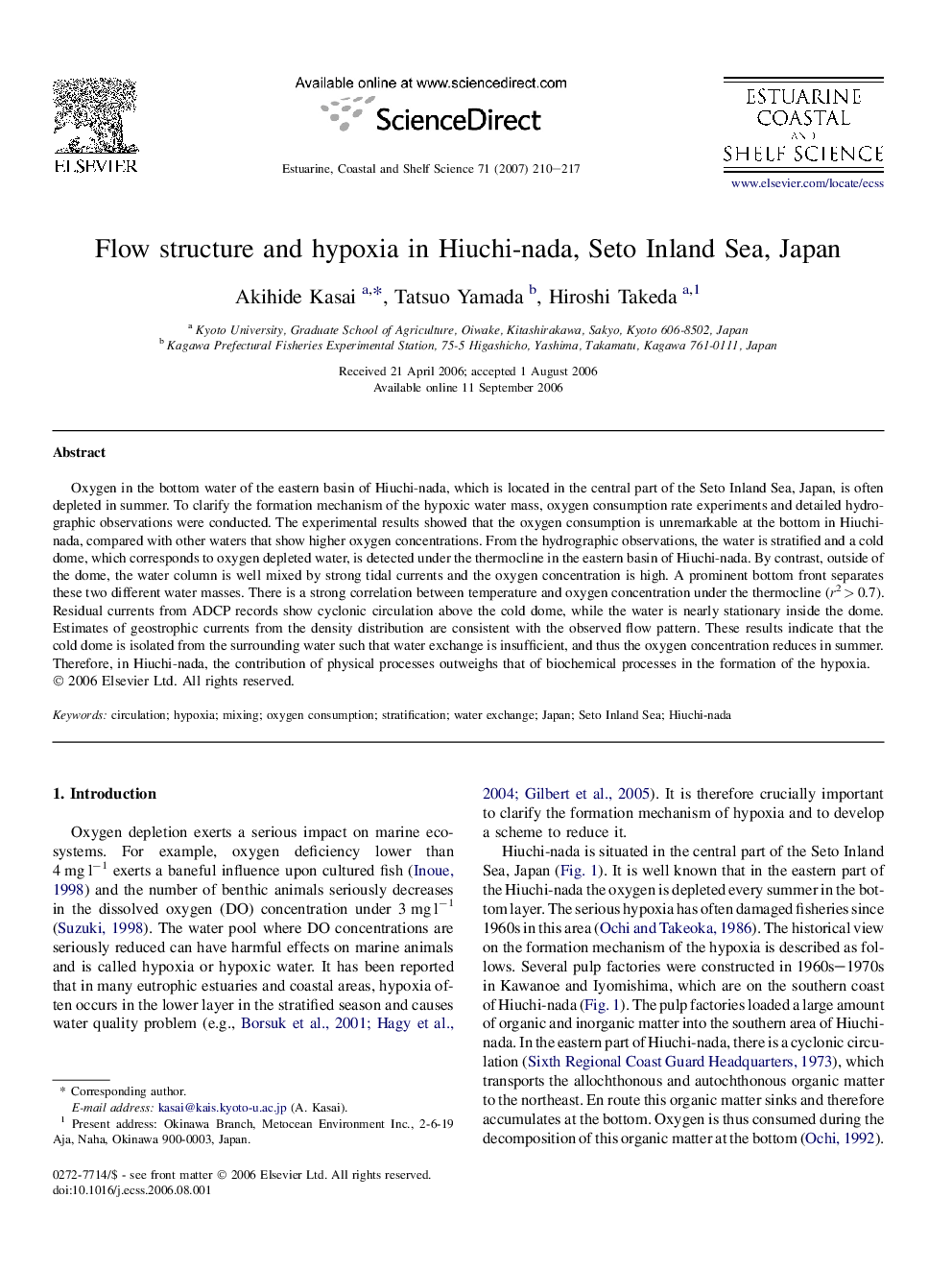| Article ID | Journal | Published Year | Pages | File Type |
|---|---|---|---|---|
| 4542062 | Estuarine, Coastal and Shelf Science | 2007 | 8 Pages |
Abstract
Oxygen in the bottom water of the eastern basin of Hiuchi-nada, which is located in the central part of the Seto Inland Sea, Japan, is often depleted in summer. To clarify the formation mechanism of the hypoxic water mass, oxygen consumption rate experiments and detailed hydrographic observations were conducted. The experimental results showed that the oxygen consumption is unremarkable at the bottom in Hiuchi-nada, compared with other waters that show higher oxygen concentrations. From the hydrographic observations, the water is stratified and a cold dome, which corresponds to oxygen depleted water, is detected under the thermocline in the eastern basin of Hiuchi-nada. By contrast, outside of the dome, the water column is well mixed by strong tidal currents and the oxygen concentration is high. A prominent bottom front separates these two different water masses. There is a strong correlation between temperature and oxygen concentration under the thermocline (r2Â >Â 0.7). Residual currents from ADCP records show cyclonic circulation above the cold dome, while the water is nearly stationary inside the dome. Estimates of geostrophic currents from the density distribution are consistent with the observed flow pattern. These results indicate that the cold dome is isolated from the surrounding water such that water exchange is insufficient, and thus the oxygen concentration reduces in summer. Therefore, in Hiuchi-nada, the contribution of physical processes outweighs that of biochemical processes in the formation of the hypoxia.
Related Topics
Physical Sciences and Engineering
Earth and Planetary Sciences
Geology
Authors
Akihide Kasai, Tatsuo Yamada, Hiroshi Takeda,
